
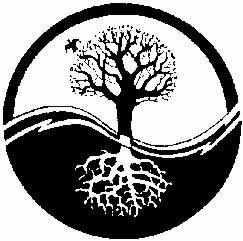
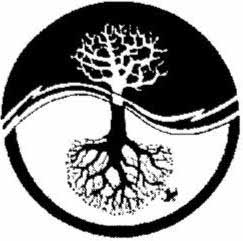



Wicca is a Neopagan religion that can be found in many English-speaking countries. Originally founded by the British civil servant Gerald Gardner, probably in the 1940s, although it was first openly revealed in 1954. Since its founding, various related Wiccan traditions have evolved, the original being Gardnerian Wicca, which is the name of the tradition that follows the specific beliefs and practices established by Gerald Gardner repeatedly in his published work of 1954. The spelling "Wicca" is now used almost exclusively, (Seax-Wica being the only major use of the four-letter spelling).
In Old English, wicca meant necromancer or male witch. Some contend that the term wicca is related to Old English witan, meaning wise man or counselor, but this is widely rejected by language scholars as false etymology. Nonetheless, Wicca is often called the "Craft of the wise" as a result of this misconception.It appears that the word may be untraceable beyond the Old English period. Derivation from the Indo-European roots 'wic' or 'weik' is seemingly incorrect by phonological understanding.Though sometimes used interchangeably, "Wicca" and "Witchcraft" are not the same thing. The confusion comes, understandably, because both practitioners of Wicca and practitioners of witchcraft are often called witches. In addition, not all practitioners of Wicca are witches, and not all witches are practitioners of Wicca.
Wicca refers to the religion. This can be a reference to both the initiatory tradition, where initiates are assigned a degree and generally work in covens, and to Solitary Wicca, where practitioners self-dedicate themselves to the tradition and generally practice on their own. Both Initiates and Solitary Wiccans worship the Goddess, with most also choosing to worship the God, and both celebrate the Sabbats and Esbats.
Witchcraft, or as it is sometimes called "The Craft", on the other hand, requires no belief in specific gods or goddesses and is not a specific spiritual path. Thus, there are Witches who practise a variety of religions besides Pagan ones, such as Judaism and Christianity. It is considered to be a learned skill, referring to the casting of spells and the practice of magic or magick (the use of the "k" is to 'in order to distinguish the Science of the Magi from all its counterfeits' (or perhaps just to make it sound better), and was coined as a spelling by Aleister Crowley). To add to the confusion the term witchcraft in popular older usage, or in a modern historical or anthropological context, means the use of black or evil magic, not something Wicca encourages at all.
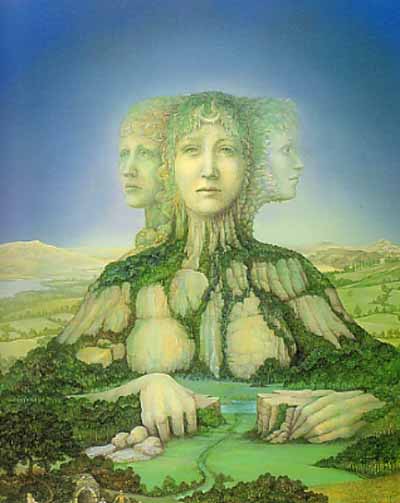
The history of Wicca is a much debated topic. Gardner claimed that the religion was a survival of matriarchal religions of pre-historic Europe, taught to him by a woman named Dorothy Clutterbuck. Many believe he invented it himself, following the thesis of Dr. Margaret Murray and sources such as Aradia: Gospel of the Witches by Charles Godfrey Leland, and the practices of Freemasonry and ceremonial magic; and while Clutterbuck certainly existed, historian Ronald Hutton concluded that she is unlikely to have been involved in Gardner's Craft activities. While the ritual format of Wicca is undeniably styled after late Victorian era occultism, the spiritual content is inspired by older Pagan faiths, with Buddhist and Hindu influences. Whether any historical connection to Pagan religion exists, the aspiration to emulate Pagan religion (as it was understood at the time) certainly does.
Gardner probably had access to few, if any, traditional Pagan rites. The prevailing theory is that most of his rites were the result of his adapting the works of Aleister Crowley. There is very little in the Wiccan rites that cannot be shown to have come from earlier extant sources. The original material is not cohesive and mostly takes the form of substitutions or expansions within unoriginal material, such as embellishment of Crowley lines.
Philip Heselton, writing in Wiccan Roots and later in Gerald Gardner and the Cauldron of Inspiration, argues that Gardner was not the author of the Wiccan rituals but received them in good faith from an unknown source. He notes that all the Crowley material that is found in the Wiccan rituals can be found in a single book, The Equinox vol 3 no. 1 or Blue Equinox. Gardner is not known to have owned or had access to a copy of this book.The idea of primitive matriarchal religions, deriving ultimately from studies by Johann Jakob Bachofen, was popular in Gardner's day, both among academics (e.g., Erich Neumann, Margaret Murray) and amateurs such as Robert Graves.
Later academics (e.g. Carl Jung and Marija Gimbutas) continued research in this area, and later still Joseph Campbell, Ashley Montagu and others highly esteemed Gimbutas's work on the matrifocal cultures of Old Europe. Both matrifocal interpretation of the archaeological record, and the foundations of criticism of such work, continue to be matters of academic debate. Some academics carry on research in this area (consider the 2003 World Congress on Matriarchal Studies). Critics argue that matriarchal societies never actually existed, and are an invention of researchers such as Margaret Murray.
The idea of a supreme Mother Goddess was common in Victorian and Edwardian literature: the concept of a Horned God--especially related to the gods Pan or Faunus--was less common, but still significant. Both of these ideas were widely accepted in academic literature, and in the popular press. Gardner used these concepts as his central theological doctrine, and constructed Wicca around this core.
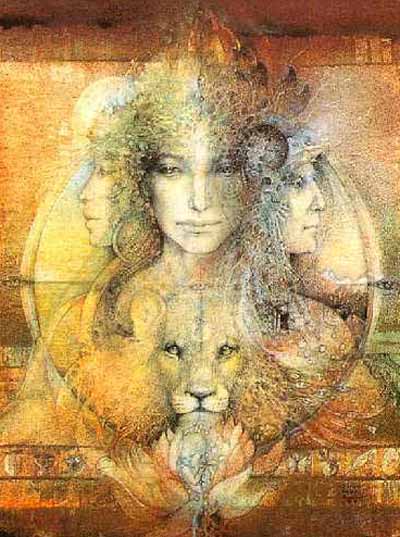
Wicca has developed in several directions and institutional structures from the time it was brought to wider attention by Gerald Gardner. Gardnerian Wicca was an initiatory mystery religion, admission to which was at least in theory limited to those who were initiated into a pre-existing coven. The Book of Shadows, the grimoire that contained the Gardnerian rituals, was a secret that could only be obtained from a coven of proper lineage. Some Wiccans such as Raymond Buckland, then a Gardnerian, continued to maintain this stance well into the 1970s. Further degrees of initiation were required before members could found their own covens. Interest outstripped the ability of the mostly British-based covens to train and propagate members; the beliefs of the religion spread faster by the printed word or word of mouth than the initiatory system was prepared to handle.
Other traditions appeared. Some claimed roots as ancient as Gardner's version, and were organised along similar lines. Others were syncretistic, importing aspects of Kabbalah or ceremonial magic. In 1971 "Lady Sheba" published a version of the Gardnerian Book of Shadows, dispelling what little secrecy remained as to the contents of Gardner's rituals. Increasing awareness of Gardner's literary sources and the actual early history of the movement made creativity seem as valuable as Gardnerian tradition.
Another significant development was creation by feminists of Dianic Wicca or feminist Dianic Witchcraft, a specifically feminist faith that discarded Gardnerian-style hierarchy as irrelevant; many Dianic Wiccans taught that witchcraft was every woman's right and heritage to claim. This heritage might be characterized by the quote of Monique Wittig "But remember. Make an effort to remember. Or, failing that, invent." This tradition was particularly open to solitary witches, and created rituals for self-initiation to allow people to identify with and join the religion without first contacting an existing coven. This contrasts with the Gardnerian belief that only a witch of opposite gender could initiate another witch.
The publications of Raymond Buckland illustrate these changes. During the early 1970s, in books such as Witchcraft - Ancient and Modern and Witchcraft From the Inside, Buckland maintained the Gardnerian position that only initiates into a Gardnerian or other traditional coven were truly Wiccans.
However, in 1974, Buckland broke with the Gardnerians and founded Seax-Wica, revealing its teachings and rituals in the book The Tree: The Complete Book of Saxon Witchcraft. This "tradition" made no claims to direct descent from ancient Saxons; all its ritual was contained in the book, which allowed for self-initiation. In 1986 Buckland published Buckland's Complete Book of Witchcraft, a workbook that sought to train readers in magical and ritual techniques as well as instructing them in Wiccan teachings and rituals.
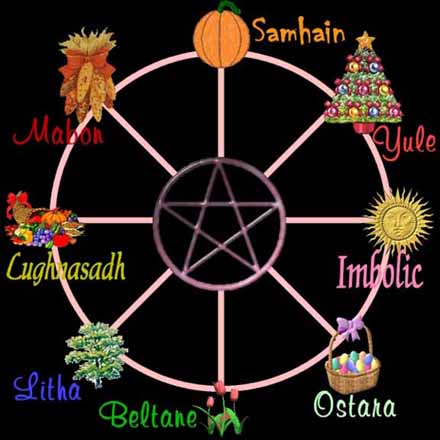
Wiccans celebrate eight main holidays (or Sabbats): four cross-quarter days called Samhain, Beltane (or Beltaine), Imbolc (also called Imbolg, Oimelc, or Candlemas) and Lammas (or Lughnasadh), as well as the solstices, Litha and Yule, and equinoxes, Ostara (or Eostar or Eostre) and Mabon (see Wheel of the Year). They also hold Esbats, which are rituals held at the full and new moon.
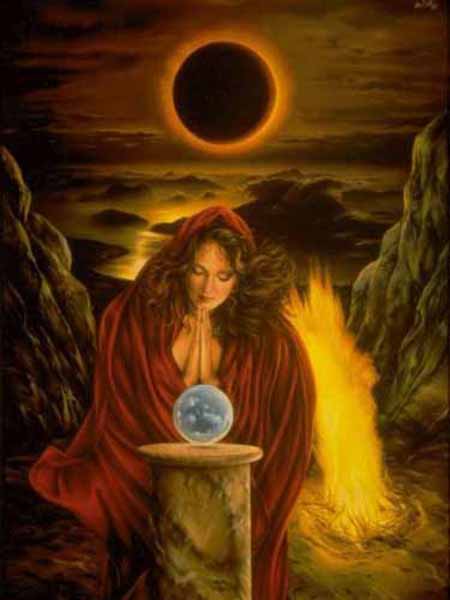
Generally, the names are of ancient Germanic or Celtic holidays held around the same time, although two do not have any historical precedent. Ritual observations may include mixtures of those holidays as well as others celebrated at the same time in other cultures; there are several ways to celebrate the holidays.
Some Wiccans join groups called covens, though others work alone and are called "solitaries". Some solitaries do, however, attend "gatherings" and other community events, but reserve their spiritual practices (Sabbats, Esbats, spell-casting, worship, magical work, etc.) for when they are alone. Some Wiccans work with a community without being part of a coven.Many beliefs hold that the ideal number of members for a coven is thirteen. When a coven grows beyond their ideal number of members, they often split into multiple covens, yet remain together as a group. A grouping of multiple covens is known as a grove.Wiccans weddings can be called "bondings", "joinings", or "eclipses" but are most commonly called "handfastings".
Some Wiccans observe an ancient Celtic practice of a trial marriage for a year and a day, which some Traditions hold should be contracted on Lammas (Lughnasadh), although this is far from universal. When someone is being initiated into a coven, it is also traditional to study with the coven for a year and a day before their actual initiation into to the religion, and some Solitary Wicca choose to study for a year and a day before dedicating themselves to the religion.
A much sensationalized aspect of Wicca, particularly in Gardnerian Wicca, is that some Wiccans practice skyclad (naked). Though many Wiccans do this, many others do not. Some Wiccans wear a pure cotton robe, to symbolise bodily purity, and a cord, to symbolise interdependence and which is often used during rituals.
Others wear normal clothes or whatever they think is appropriate. Robes and even Renaissance-Faire-type clothing are not uncommon.In usual rites the Wiccans assemble inside a magic circle, which is drawn out in a ritual manner followed by a cleansing and then blessing of the space. Prayers to the God and Goddess are said, and spells are sometimes worked. Traditionally, the circle is followed by a meal. Before entering the circle, some Traditions fast for the day, and have a thorough wash.
Many Wiccans use a special set of altar tools in their rituals; these can include a broom (besom), cauldron, Chalice (goblet), wand, Book of Shadows, altar cloth, athame (personal knife), altar knife, boline, candles, and/or incense. Representations of the God/Goddess are often also used, which may be direct, representative, or abstract. The tools themselves are just that--tools, and have no innate powers of their own, though they are usually dedicated or charged with a particular purpose, and used only in that context. It is considered rude to touch another's tools without permission.
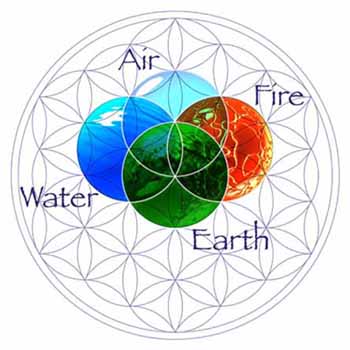
There are different thoughts in Wicca regarding the Elements. Some hold to the earlier Greek conception of the classical elements (air, fire, water, earth), while others recognize five elements: earth, air, water, fire, and spirit (akasha). It has been claimed that the points of the frequently worn pentagram symbol, the five pointed star, symbolize five elements.
The pentacle (a pentagram (five-pointed star) inside of a circle) is most often shown with its point facing upward. Alexandrian Wicca believe that the upper point represents spirit, and the four remaining points symbolise earth, air, fire, and water. This symbolism has slowly worked itself into other traditions such as Solitary Wicca and Seax-Wica, but most Gardnarian Wicca will deny that the points of the pentagram or pentacle actually represent anything at all.
Some people believe that the top point of the pentacle was chosen to represent the spirit as it is often recognized as being more important than the four elements. When, in Satanism for example, the pentacle is usually inverted, the point representing spirit faces downward, and it is often taken that this symbolizes that it is less important than physical things.
Another much less common view on the symbolism of the pentacle is that the upright pentacle is a protective charm which protects its wearer through passive energies, such as good will or pleasing emotions, and that the inverted pentacle protects its wearer using aggressive energies, such as curses or angry emotions.
In either case, these are the elements of nature that symbolize different places, emotions, objects, and natural energies and forces. For instance, crystals and stones are objects of the element earth, and seashells are objects of the water element. Each of the four cardinal elements, air, fire, water and earth, are commonly assigned a direction and a color. The following list is not true for all traditions, or branches of Wicca:
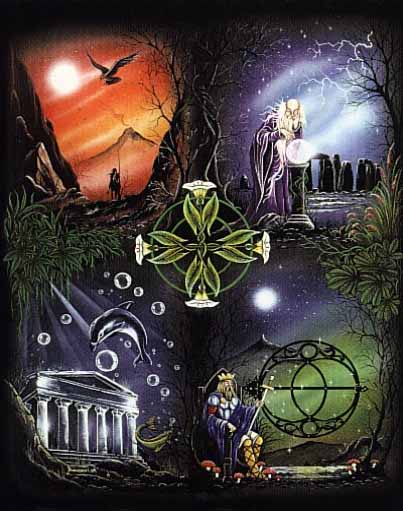
Elemental, directional correspondences, and colors may vary between traditions. It is common in the southern hemisphere, for instance, to associate the element fire with north (the direction of the equator) and earth with south (the direction of the nearest polar area.) Some Wiccan groups also modify the religious calendar to reflect local seasonal changes; for instance, in Australia Samhain might be celebrated on April 30th, and Beltane on October 31st to reflect the southern hemisphere's autumn and spring seasons.
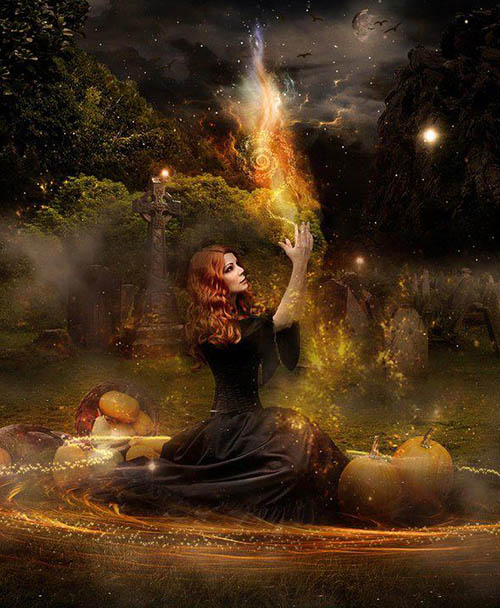
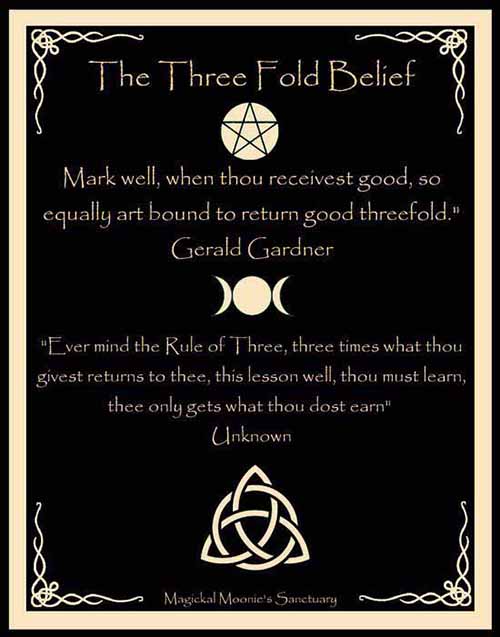
Wiccan morality is ruled according to the Wiccan Rede, which (in part) states "An it harm none, do what thou wilt." ("An" is an archaic word meaning "if".) Others follow the slightly adapted Rede of "An it harm none, do what ye will; if harm it does, do what ye must." Either way, the Rede is central to the understanding that personal responsibility, rather than a religious authority, is where moral structure resides.One of the major differences between Wiccans and other types of witchcraft is the Rede.
Many "traditional" witches or witches that follow other paths do not believe in the Rede. This is a major topic of controversy within the Wiccan and Pagan communities. Many Wiccans also promote the Law of Threefold Return, or the idea that anything that one does may be returned to them threefold. In other words, good deeds are magnified back to the doer, but so are ill deeds.
Gerina Dunwich, an American author whose books (particularly Wicca Craft) were instrumental in the increase in popularity of Wicca in the late 1980s and 1990s, disagrees with the Wiccan concept of threefold return on the grounds that it is inconsistent with the Laws of Physics.
Pointing out that the origin of the Law of Threefold Return is traceable to Raymond Buckland in the 20th century, Dunwich is of the opinion that "There is little backing to support it as anything other than a psychological law." Her own personal belief, which differs from the usual interpretation of the Threefold Law, is that whatever we do on a physical, mental, or spiritual level will sooner or later affect us, in either a positive or negative way, on all three levels of being.
A few Wiccans also follow, or at least consider, a set of 161 laws often referred to as Lady Sheba's Laws. Some find these rules to be outdated and counterproductive.Most Wiccans also seek to cultivate the Eight Wiccan Virtues. These may have been derived from earlier Virtue ethics, but were first formulated by Doreen Valiente in the Charge of the Goddess. They are Mirth, Reverence, Honour, Humility, Strength, Beauty, Power, and Compassion. They are in paired opposites which are perceived as balancing each other.
Many Wiccans also believe that no magic (or magick) can be performed on any other person without that person's direct permission (excepting pets and young children who can be protected by parents and owners). Sometimes when permission is expected but not yet attained magical energy will be placed on the astral plane for the receiver to gather if and when he/she is ready. Read more ...

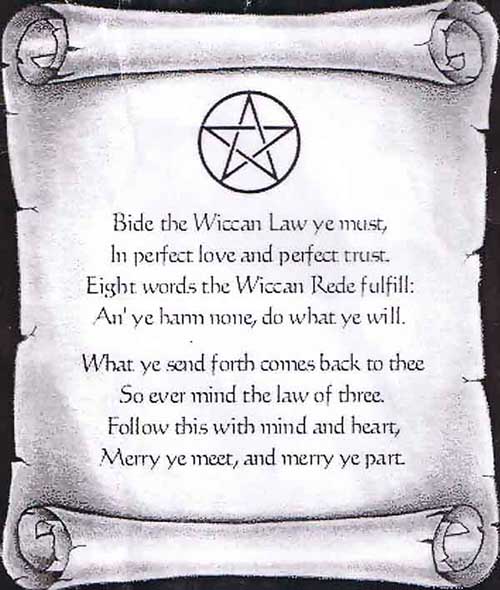
Bide within the Law you must, in perfect Love and perfect Trust.
Live you must and let to live, fairly take and fairly give.
For tread the Circle thrice about to keep unwelcome spirits out.
To bind the spell well every time, let the spell be said in rhyme.
Light of eye and soft of touch, speak you little, listen much.
Honor the Old Ones in deed and name,
let love and light be our guides again.
Deosil go by the waxing moon, chanting out the joyful tune.
Widdershins go when the moon doth wane,
and the werewolf howls by the dread wolfsbane.
When the Lady's moon is new, kiss the hand to Her times two.
When the moon rides at Her peak then your heart's desire seek.
Heed the North winds mighty gale, lock the door and trim the sail.
When the Wind blows from the East, expect the new and set the feast.
When the wind comes from the South, love will kiss you on the mouth.
When the wind whispers from the West, all hearts will find peace and rest.
Nine woods in the Cauldron go, burn them fast and burn them slow.
Birch in the fire goes to represent what the Lady knows.
Oak in the forest towers with might, in the fire it brings the God's
insight. Rowan is a tree of power causing life and magick to flower.
Willows at the waterside stand ready to help us to the Summerland.
Hawthorn is burned to purify and to draw faerie to your eye.
Hazel-the tree of wisdom and learning adds its strength to the bright fire burning.
White are the flowers of Apple tree that brings us fruits of fertility.
Grapes grow upon the vine giving us both joy and wine.
Fir does mark the evergreen to represent immortality seen.
Elder is the Lady's tree burn it not or cursed you'll be.
Four times the Major Sabbats mark in the light and in the dark.
As the old year starts to wane the new begins, it's now Samhain.
When the time for Imbolc shows watch for flowers through the snows.
When the wheel begins to turn soon the Beltane fires will burn.
As the wheel turns to Lamas night power is brought to magick rite.
Four times the Minor Sabbats fall use the Sun to mark them all.
When the wheel has turned to Yule light the log the Horned One rules.
In the spring, when night equals day time for Ostara to come our way.
When the Sun has reached it's height time for Oak and Holly to fight.
Harvesting comes to one and all when the Autumn Equinox does fall.
Heed the flower, bush, and tree by the Lady blessed you'll be.
Where the rippling waters go cast a stone, the truth you'll know.
When you have and hold a need, harken not to others greed.
With a fool no season spend or be counted as his friend.
Merry Meet and Merry Part bright the cheeks and warm the heart.
Mind the Three-fold Laws you should three times bad and three times good.
When misfortune is enow wear the star upon your brow.
Be true in love this you must do unless your love is false to you.
These Eight words the Rede fulfill:
"An Ye Harm None, Do What Ye Will"
Aside from the Wiccan Rede and the "three-fold law", Wiccans do not have to subscribe to a fixed ideology so beliefs vary, however the common theme is that Wiccans gain a connection with the divine spirit of mother nature through the celebration of her cycles through the Wicca calender. This is done either individually or with other Wiccans.
According to most versions of the three-fold law, whatever one does comes back to one thrice-multiplied, in amplified repercussion. One short, rhymed version of the Wiccan Rede states "Eight words the Wiccan Rede fulfill: An it harm none, do what you will." Often "none" is interpreted to include the doer him self in analogy to the "golden rule" of other faiths. There are no universal proscriptions regarding food, sex, burial or military service and Wiccans, as a rule, discourage proselytizing (attempts to convert others to a different religion).
At key points in the year Wiccans gather and connect with nature, generally by forming a circle, sometimes using set forms of words, or otherwise improvising according to the participants needs.
The morality of wicca is based heavily on free will allowing individual freedom with as little interference as possible. There is high level of equality in Wicca with the emphasis on the circle and the lack of any preaching. The concept of a talking stick where everyone has their say is more widespread than dominating leaders. The emphasis is on the creation of harmony by allowing the individual to do their own will but encouraging them to think of the harm done to others by the exercising of this freedom.
In order to understand Wicca it is essential to know its roots. All countries have a native spiritual tradition based around reverence for the forces of nature. Wicca is the native tradition for the nations of England, Scotland, Ireland, and Wales, and is rooted in the period before 500 BC which marks the start of the iron age. The sacred sites from this period, in particular Avebury/Silbury and Stonehenge, are important to Wicca as are the ancient British legends, for example the Mabignogian. Wicca was illegal in Britain for nearly 1000 years up until 1951, however following it's legalization a large amount of material has been published and Wicca is now accessible to all.
Wicca has its own art, including jewelry, and also has a deep understanding of the power of plants, in particular the influence of their fragrances. Many Wiccan also use crystals, both for their natural beauty and for their spiritual power.

Wiccan jewelry includes earrings, pendants and necklaces which often contain precious stones with particular meaning and Wiccan symbols. Crystals give power to the wearer.
Wicca is a Neo-Pagan religion based on the pre-Christian traditions of England, Ireland, Scotland, and Wales. Its origins can be traced even further back to Paleolithic peoples who worshipped a Hunter God and a Fertility Goddess. Cave paintings found in France (and dated at 30,000 years old) depict a man with the head of a stag, and a woman with a swollen, pregnant belly. They stand in a circle with eleven mortals. These archetypes of the divine are worshipped by Wiccans to this very day. By these standards, the religion that is now called Wicca, is perhaps the oldest religion in the world.
In 1951, the laws against Witchcraft were repealed in England. A man named Gerald Gardner was the first to come into the public eye with description of what modern witches were practicing. His information came from the traditions of a coven called the New Forest Witches, and from Ceremonial Magick and the Kaballah. He began what is now called the Gardnerian Tradition of Wicca. From Gardnerian came Alexandrian Tradition and a host of other offshoots that today number in the hundreds.
Wicca is based on a deep respect for nature and the certain knowledge that we do not have the right to exploit it for our own gain. Wiccans are deeply concerned with conservation and ecology, and as in all Neo-Pagan religions.
Wiccans believe that both animate and inanimate objects possess a spirit which forms part of the Whole. Spirit is that essence which every object possesses linking it to nature.
Wicca is a celebration of the life-forces of nature as personified by the Goddess and her consort, the Gods.
Some Wiccans see their inspiration and traditions as coming directly from the gods. Certain Wiccan mythology holds that Wicca has come down from the stone age, surviving persecution in secret covens for hundreds of years.
Others say that their Wicca is a long-held family tradition (or "fam trad"), passed down through villages and grandmothers. Aidan Kelly argues that modern Wicca was largely pieced together by Gerald Gardner from Margaret Murray, Charles Leland and other sources, with significant revisions by Doreen Valiente (and others), beginning in 1939.
Whatever its origins, Wicca today is a vibrant, modern religion, open to change, creativity and personalization. Wicca is different than the religions of the ancient people, but it embraces some of the same beliefs. Wiccan's have a common belief that the Earth is Sacred and the animals that dwell on it are sacred as well. Wicca or Witchcraft, Paganism, High Magic and other forms of Occultism are not Satanism. Satan is a belief of Christianity.
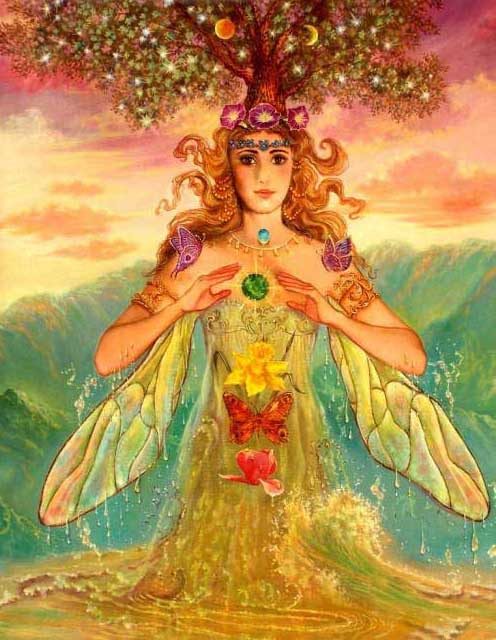
Although some Wiccans focus on particular gods from particular world mythologies, Wiccans may worship many god(goddesses)s by many different names. Most worship some form of the Great Goddess and Her consort, The Horned God. Such duo-theistic forces are often conceived as embodying complementary polarities, not in opposition. In some traditions worship of the Goddess is emphasized, although in others the Goddess and God are seen as complementary co-equals.
The Goddess and God may be seen as associated with certain things (such as the Goddess with the earth or moon, God with sun and wildlife, etc), but there are no hard and fast rules. Some traditions worship the Goddess alone while others see Divinity as essentially beyond human understanding, with "Goddess" and "God" simply a convenient shorthand.
Some ritual items are common to almost every Wiccan tradition, such as the athame (ritual knife) and chalice (ritual cup). Others may be used by some traditions but not others: bells, brooms, candles, cauldrons, cords, drums, incense, jewelry, special plates, pentacles, scourges, statues, swords, staves and wands.
The meaning of these items, their use and manufacture will differ among traditions and individuals. Usually a Wiccan ritual will involve some sort of creation of sacred space (casting a circle), invocation of divine power, sharing of dance/song/food or wine and a thankful farewell and ceremonial closing. Rituals may be held at Wiccan "sabbats" or "esbats" or to mark life transitions such as births, coming-of-age, marriages/handfastings, housewarmings, healings, deaths or other rites of passage.
Most Wiccans mark eight holiday "sabbats" in the "wheel of the year," falling on the solstices, equinoxes and the four "cross-quarter days" on or about the first of February, May, August and November. The names of the sabbats may differ between traditions, and many Wiccans also mark "esbats," rituals for worship in accordance with a given moon phase (such as the night of the full moon).
Although there is no one source for all Wiccan liturgy, many liturgical items such as the methods for casting the circle, the "Charge of the Goddess," certain myths and expressions are common to many traditions.
Some common expressions include "hail and welcome/farewell," "blessed be and the closing "Merry meet and merry part, and merry meet again."
There is no one bible or book of common prayer for all Wiccans, however, and great value is placed on creativity, poetry and the artful integration of different myths and ritual elements.
Some myths and associations are common to many Wiccan traditions, such as the Goddess' giving birth to the Horned God, the theme of their courtship and His death, the descent of the Goddess into the realm of death and others.
Another theological point held in common by many Wiccans is the immanence of deity/divinity within the natural world, self and cycle of the seasons. This places value on the earth and this world, as distinguished from views of transcendent divinity and creation.
Wiccans as a whole are very much "into" cycles: of life, of the moon and seasons. Cyclical change as an erotic dance of life, death and rebirth is a popular theme in Wiccan imagery, ritual and liturgy.
Although it may be foolhardy to compare things as complex as religions, people do. Many Wiccans distinguish themselves from Satanists, for example, in preferring complementary views of divinity to adversarial ones. Others may note their own comfort and embrace of ambiguity and polytheism (many gods).
Unlike the Jewish, Christian or Islamic traditions, there is little emphasis on interpretation of "scripture" or a revealed text. Although many Wiccans may believe in some sort of reincarnation, they may distinguish themselves from Buddhists in seeing life as a journey or adventure without any desire to "leave the wheel" of return.
Like Hindus, Wiccans may pride themselves on their tolerance for other paths, like Buddhists they may value personal insight and like Taoists they may seek to align themselves more perfectly with nature. Some Wiccans may separate themselves from the "New Age" in their value for both "light" and "dark" aspects of existence, a do-it-yourself attitude and a distrust of money or hierarchies of enlightenment.
Can I be a Christian/ Jew/ Muslim/ Buddhist/ Taoist/ Astrologer/ Druid/ Shaman/ omnivore/ whatever and a Wiccan? Since much of Wicca is more world view and ceremonial practice than anything else, there is no Wiccan proscription of such things. Most traditions have no requirement to denounce any other faith and, indeed, Wiccans often look askance at "one true wayism" which claim to have a monopoly on truth, divine revelation or enlightenment. "Christian Wiccans" probably face the largest skepticism, however, given the history and ongoing reality of allegedly "Christian" persecution.
Prejudice (fear of job-loss, child-custody challenges, ridicule, vandalism and even violence) may still keep many Wiccans "in the broom closet," with concealment and dual observances a traditional Wiccan defense against persecution. This may make contact with Wiccans difficult in some areas. Since Wiccan worship is fairly active by its nature, non-participating observers are rarely invited to Wiccan rituals.
Usually "dedication" ceremonially marks the beginning of Wiccan study, while "initiation" may mark full membership in a coven/tradition (such as after "a year and a day") or may indicate elevation in skill or to special clergy status. Some traditions look on all initiates as co-equal clergy, while others have grades or "degrees" of initiation, which may be marked by distinct sacramental ceremonies, duties or expectations within the tradition.
Almost all Wiccans, however, have some sort of ceremony or psychological practice to better attune themselves with divinity, encouraging insight and a sense of efficacy. Others may cast love spells or other curses.
Some Wiccans call themselves "Witches," capitalizing it as a gesture of solidarity with the victims of the Burning Times, but this is a personal decision. Although many Wiccans today may cast spells and practice magick, these are not considered an integral part of Wicca by all Wiccans. Wicca is not traditional folk magic and all magic is not necessarily Wiccan, anymore than all people who pray belong to any particular religion.
"The Burning Times" is the term used by many modern Neo-Pagans and feminists to refer to the great European witch-hunts of the early modern period, coincident with the time of the reformation and seen by many as a crucial step in Christianity's crushing of the Pagan religions, driving these underground. Some authors claim as many as ten million people were killed in these hunts, while more recent scholars put the number of documented deaths at 20-100 thousands, 80-90% of these women. Sometimes these numbers are doubled to account for non-judicial killings and deaths from torture, suicide, etc. Whatever the numbers, however, victims of these hunts are perceived as martyrs by Wiccans today, with the lessons of intolerance, misogyny and religious terror clearly noted.


The Adventures of Two Witches On A Photo Shoot
